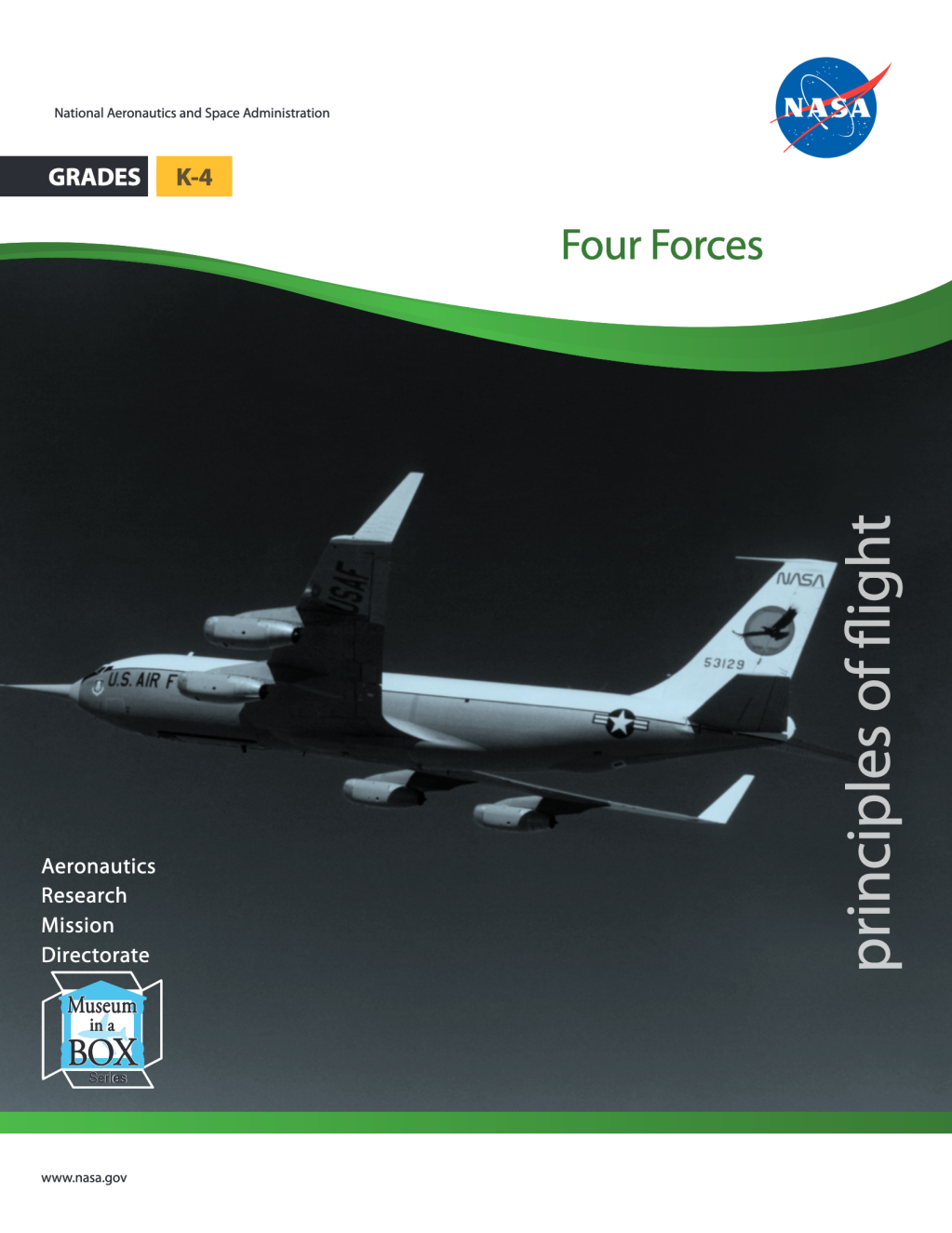
Audience
Educators
Grade Levels
Grades K-4, Grades 5-8
Subject
Mathematics, Physical Science, Geometry, Measurement and Data Analysis, Flight and Aeronautics, Forces and Motion
Type
Lesson Plans / Activities
MUSEUM IN A BOX
Four Forces (K-4 and 5-8)
Four Forces (K-4), students will be exposed to the four forces of flight and experience the relationship between them by reviewing an internet site, participating in a board game and completing a word search. Activity 1 consists of going to an internet site that has a presentation of the four forces of flight. It is a series of slides similar to a PowerPoint presentation. The illustrations are simple and there are a few questions dispersed throughout. They may be good discussion points. Activity 2 will consist of a board game in which students role a cube with the four forces on all sides. Based on the force, they will move their playing piece a certain number of spaces. The goal is to the first to get from one airport to the other before anyone else. Activity 3 will be a word search of aeronautical terms. A word bank is provided.
Grade Level: K-4
Time Required: 60 minutes
National Science Standards Addressed:
Science:
- Abilities necessary to do scientific inquiry
- Position and motion of objects
- Abilities of technological design
- Science and technology in local challenges
In the Four Forces (5-8) Probability, Graphing, Ratios activity is a modification of one that appeared in the NASA “Why” Files. Specifically, it was Program 4 of the 2000 – 2001 series, “The Case of the Challenging Flight”. It can be located at: https://www.nasa.gov/pdf/636827main_Sci%20Filesguide4_00.pdf. In this activity, students will be presented with a scenario of an aircraft carrier receiving a distress call from a downed pilot on a nearby mountain island. Students will move from the carrier toward the pilot by progressing in one of four directions; up (lift), forward (thrust), down (gravity / weight) or backward (drag). The direction that the students move will be determined by spinning one of four spinners. Students will determine which of the spinners would be most advantageous based on a statistical analysis. The goal is to select the spinner that has the highest probability of moving the student in the desired direction. The goal will be landing exactly on the location area of the downed pilot, without crashing into land. The statistical analysis will be conducted by each student or team of students. Spinning will be done by providing each student with a large paper clip and pen or pencil. Fifty spins will be made and recorded for each of the four spinners, for a total of 200 spins. This information will be entered into an excel spreadsheet and, with the chart wizard, will generate four charts which will visually demonstrate the probabilities of each force on each spinner.
Grade Level: 5-8
Time Required: 60 minutes
National Science Standards Addressed:
Science:
- Abilities necessary to do scientific inquiry
- Understanding about scientific inquiry
- Objects in the sky
- Understanding about science and technology
- Science and technology in local challenges
- Science as a human endeavor
Math:
- Compute fluently and make reasonable estimates
- Understand patterns, relations, and functions
- Use mathematical models to represent and understand quantitative relationships
- Analyze change in various contexts
- Use visualization, spatial reasoning, and geometric modeling to solve problems
- Understand measurable attributes of objects and the units, systems, and processes of measurement
- Apply appropriate techniques, tools, and formulas to determine measurements
- Formulate questions that can be addressed with data and collect, organize, and display relevant data to answer them.
- Select and use appropriate statistical methods to analyze data
- Understand and apply basic concepts of probability
- Problem Solving
- Reasoning and Proof
Topic: Forces, Motion, Probability, Graphing, Ratios
Topic: Forces





























